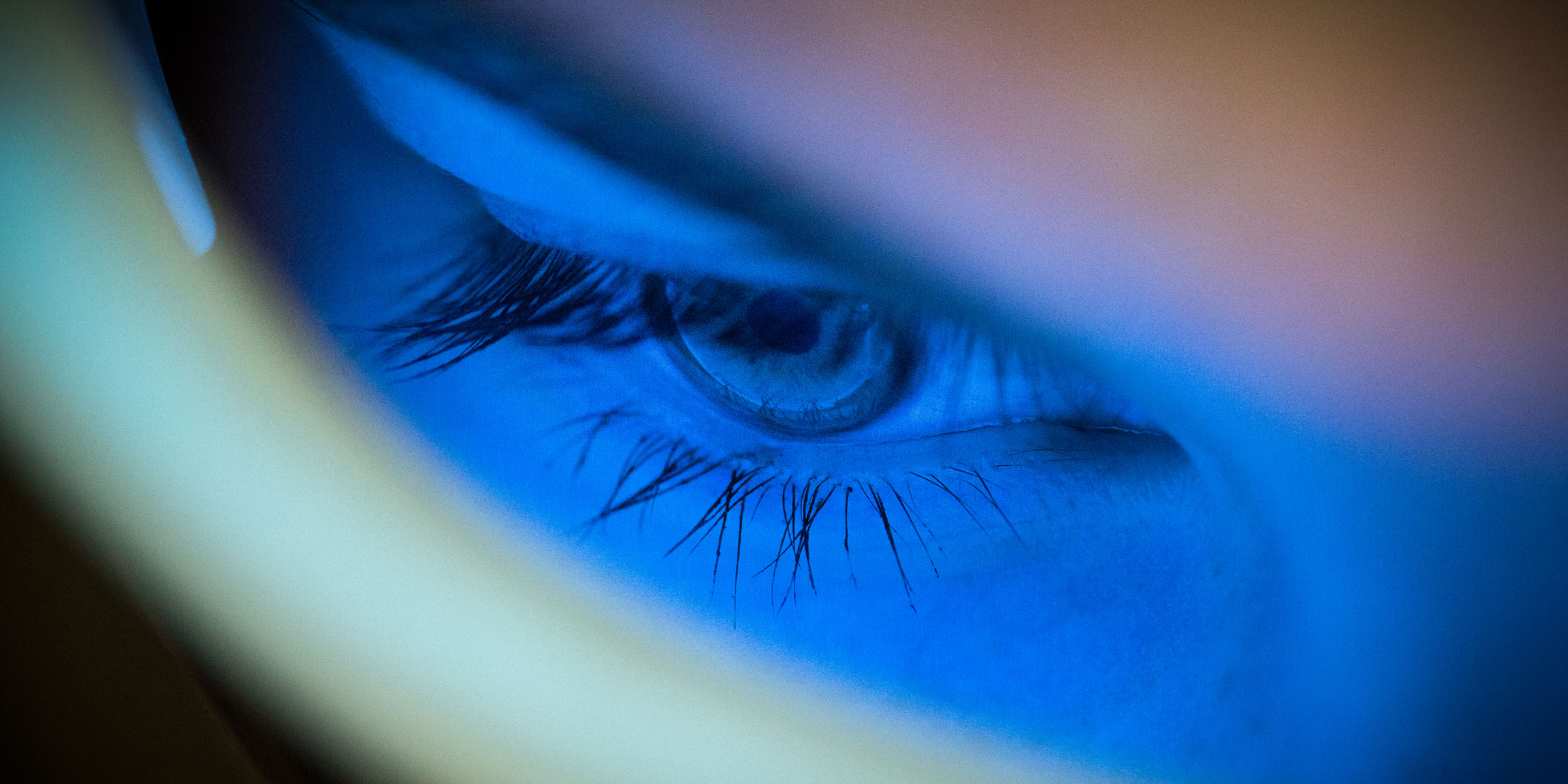Lumière à 40 Hz
Régression de la maladie d'Alzheimer
La maladie d'Alzheimer est une maladie neurodégénérative progressive qui affecte le cerveau. Elle est caractérisée par une perte de mémoire et une détérioration progressive des fonctions cognitives telles que la capacité de raisonner, de penser de manière abstraite, de comprendre et d'utiliser le langage, ainsi que des changements de comportement et d'humeur.
La maladie d'Alzheimer est causée par une accumulation de protéines anormales dans le cerveau, qui entraîne la mort des cellules cérébrales. Il n'existait actuellement aucun traitement curatif pour la maladie d'Alzheimer.
Cependant depuis une dizaine d’année, une révolution est en cours pour la régression de cette terrible maladie qui touche 8% de la population après 65 ans. Cette régression significative s’opère sur base d’une stimulation par la lumière à 40 hertz et avec la longueur d’onde du bleu à 470 nm ( la longueur d’onde déjà couramment utilisée dans la technologie PSIO pour stimuler la glande pinéale.
Le PSiO 3.0 a été désigné spécialement pour correspondre au cahier des charges développé grâce aux différentes études.
Celles-ci montrent une régression de la plaque d’amyloide et du désordre neurovégétatif qui est caractérisé par le dépôt anormal de certaines protéines qui se déposent sur les neurones.
Les articles
- Stimulating the brain at 40 Hz to treat Alzheimer’s disease.
What if exposure to 40 Hz light and sound could promote a healthier brain? That’s the hypothesis of scientists at The Picower Institute for Learning and Memory at Massachusetts Institute of Technology (MIT).
[ Téléchargez le PDF pour impression ] - 40Hz : la fréquence que le cerveau adore et qui lutte contre Alzheimer.
Une fréquence particulière, de 40 Hz joue un rôle central dans les fonctions cérébrales. le cerveau marche au mieux avec cette fréquence et elle lutte contre Alzheimer.
[ Téléchargez le PDF pour impression ] - The Idea Behind Using Masked 40 Hz, Light Based Brain Stimulation for Alzheimer Disease.
Marcus Carstensen, PhD candidate, CTO and co-founder of OptoCeutics in Copenhagen, Denmark, talked about the mechanisms of using noninvasive light technologies for Alzheimer disease treatment.
[ Téléchargez le PDF pour impression ] - Alzheimer : des vibrations sonores quotidiennes pour freiner sa progression ?
Valisoa Rasolofo & J. Paiano. Source : Frontiers.
[ Téléchargez le PDF pour impression ] - 40 Hz vibrations reduce Alzheimer’s pathology, symptoms in mouse models
Support for the study came from The JPB Foundation, The Picower Institute for Learning and Memory, Eduardo Eurnekian, The DeGroof-VM Foundation, Halis Family Foundation, Melissa and Doug Ko Hahn, Lester Gimpelson, Eleanor Schwartz Charitable Foundation, The Dolby Family, Kathleen and Miguel Octavio, Jay and Carroll Miller, Anne Gao and Alex Hu and Charles Hieken.
[ Téléchargez le PDF pour impression ]
Les études
- Early-life stress lastingly alters the neuroinflammatory response to amyloid pathology in an Alzheimer's disease mouse model.
Lianne Hoeijmakers, Silvie R Ruigrok, Anna Amelianchik, Daniela Ivan, Anne-Marie van Dam, Paul J Lucassen, Aniko Korosi.
This indicates that, at least in a genetic context, ES could aggravate AD pathology.
[ Téléchargez le PDF pour impression ] - Gamma Frequency Inhibits the Secretion and Aggregation of Amyloid-β and Decreases the Phosphorylation of mTOR and Tau Proteins in vitro.
Yuan-Han Yang, Sun-Wung Hsieh, Hsi-Wen Chang, Jia-Li Sung, Chih-Pin Chuu, Chen-Wen Yen, Tzyh-Chyuan Hour.
Our study showed 40 Hz gamma frequency involved in the inhibition of secretion and aggregation of Aβ and inhibition of p-Tau protein expression through the mTOR/4E-BP1/Tau signaling pathway.
[ Téléchargez le PDF pour impression ] - Physical exercise during exposure to 40-Hz light flicker improves cognitive functions in the 3xTg mouse model of Alzheimer's disease : results show that exercising in a 40-Hz light flickering environment may improve cognitive functioning by reducing Aβ and tau levels, thereby enhancing mitochondrial function and neuroplasticity.
Sang-Seo Park, Hye-Sang Park, Chang-Ju Kim, Hyun-Sik Kang, Dong-Hyun Kim, Seung-Soo Baek, Tae-Woon Kim.
[ Téléchargez le PDF pour impression ] - Combined effects of aerobic exercise and 40-Hz light flicker exposure on early cognitive impairments in Alzheimer's disease of 3×Tg mice.
Sang-Seo Park, Hye-Sang Park, Chang-Ju Kim, Seung-Soo Baek, Song-Young Park, Cody Anderson, Myung-Ki Kim, Ik-Ryeul Park, Tae-Woon Kim.
Exercising in a 40-Hz light flicker environment was more effective than exercise or 40-Hz light flicker alone. This synergistic effect may prevent cognitive dysfunction by inhibiting Aβ, tau pathway, and neuroinflammation and enhancing neuroplasticity and mitochondrial functions in the hippocampus during early Alzheimer's disease.
[ Téléchargez le PDF pour impression ] - 40 Hz Light Flicker Promotes Learning and Memory via Long Term Depression in Wild-Type Mice.
Tian Tian, Xin Qin, Yali Wang, Yan Shi, Xin Yang.
[ Téléchargez le PDF pour impression ] - Alzheimer's Disease Treatment With Combination of 40Hz Light and Cognitive Therapy (AlzLife).
[ Téléchargez le PDF pour impression ] - 40-Hz steady state response in Alzheimer's disease and mild cognitive impairment.
J.A. van Deursen, E.F.P.M. Vuurman, V.H.J.M. van Kranen-Mastenbroek, F.R.J. Verhey, W.J. Riedel.
[ Téléchargez le PDF pour impression ] - The Effects of Long-Term 40-Hz Physioacoustic Vibrations on Motor Impairments in Parkinson’s Disease: A Double-Blinded Randomized Control Trial
Healthcare (Basel). 2020 Jun. Abdullah Mosabbir, Quincy J. Almeida, and Heidi Ahonen.
[ Téléchargez le PDF pour impression ]
